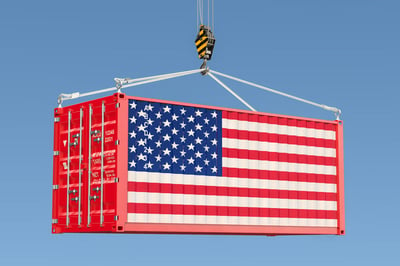Survival guide for shipping container inspections in the U.S.
We’ve written about shipping container inspections in Canada. Learn more about the busiest ports into Canada and what you can do to be prepared.
But what about shipments crossing the U.S. border?
U.S. shipping container inspections
Each year, more than 11 million maritime containers arrive at U.S. seaports, and 3-5% of those are chosen for a Customs exam.
Customs and Border Protection (CBP) has the right to examine any shipments imported into the United States. The importer is required to bear the cost of these cargo exams.
Who gets inspected?
The short answer is: no one really knows. CBP doesn’t disclose the examination information to the trade community due to national security risk.
But, here’s what we do know:
- The shipper, importer, tariff number, and country of origin/export are all taken under consideration.
- Although some examinations are random, there’s a track record that follows you and your supply chain.
- If you’re a first-time importer, CBP will likely examine your first few shipment to establish credibility.
- If you’re a repeat offender of marking or labeling issues, for example, exams will likely be thorough.
My shipment was flagged for exam. What now?
- If your shipment has been electronically transmitted to Customs via Automated Broker Interface (ABI), your Customs broker will receive an electronic system notification advising a “manifest hold.”
- A notification is also sent out to the carrier, as well as anyone listed in the Notify Party field on your Bill of Lading.
- If the field is blank, it will be sent to the Consignee listed.
If your shipment is moved to a Centralized Examination Station (CES), companies that are Customs-Trade Partnership Against Terrorism (C-TPAT) certified receive preferential treatment.
It’s also important to note that CBP and any Participating Government Agencies (PGAs) that regulate your cargo have the right to recall your goods with a redelivery notice up to 180 days after release.
How long? How much?
Once your cargo is flagged for inspection by CBP’s algorithm, it will likely be subject to one of three common exams, each of which has its own timeline and fees.
Please note that labour disputes and port delays can affect the timelines on all three kinds of inspections.
VACIS/NII x-ray exam
The most typical inspection is the Vehicle and Cargo Inspection System (VACIS) or Non-Intrusive Inspection (NII). The process is simple: your container is X-rayed so CBP agents can look for contraband items or cargo that doesn’t match the paperwork provided.
This inspection is fairly unobtrusive, so it’s less costly and time consuming.
Cost: Around $300. But you may also be charged for the transportation to and from the inspection site (called drayage).
Timeline: Depends on amount of traffic in the port and length of the queue, but generally 2-3 days.
Next steps: If the VACIS/NII exam doesn’t reveal anything out of the ordinary, your container will be released. If the exam raises suspicion, your shipment will be escalated to a more thorough exam.
Tailgate/backdoor exam
In the VACIS/NII exam, the seal on your container stays intact. However, in a tailgate exam, a CBP officer will break the seal of your container and look inside some of the shipments.
Cost: Up to $350, plus any transportation costs.
Timeline: 5-6 days, depending on port traffic.
Next steps: Again, if everything looks fine, your container is released. If not, your shipment may be flagged for the third type of exam.
Contraband Enforcement Team (CET)/intensive exam
As you can probably tell, this exam is an in-depth search of your container and goods.
Cost: A couple of thousand dollars. Your shipment will be transported to a Customs Examination Station (CES), and you’ll pay the drayage costs. You pay for the labor to unload and reload the shipment, as well as detention costs for keeping your container longer than expected.
Timeline: This exam can result in delays ranging from a week to 30 days, depending on how many other shipments are in the inspection queue.
Damage: Because inspection staff won’t repack the container with the same care and attention, it may arrive damaged. Neither CBP nor the employees of the CES are responsible for any damage done during an inspection.
It’s important to ensure that you have adequate insurance coverage against transit or inspection-related damages.
Remember, we are on your side! We’re ready to help ensure that your shipments and track record are gold standard. We can help ensure the inspection process goes as smoothly as possible.
Learn more about our freight services.
Making you aware. It's what we do.

Latest Articles
- Watch out for these extra charges on your freight bill
- Key differences between duty drawbacks and duty refunds for importers
- Mitigating container shortages and rising shipping prices for ocean imports
- How Canadian importers benefit from end use tariff codes and conditional relief
- The benefits of operating as a Non-Resident Importer in Canada
